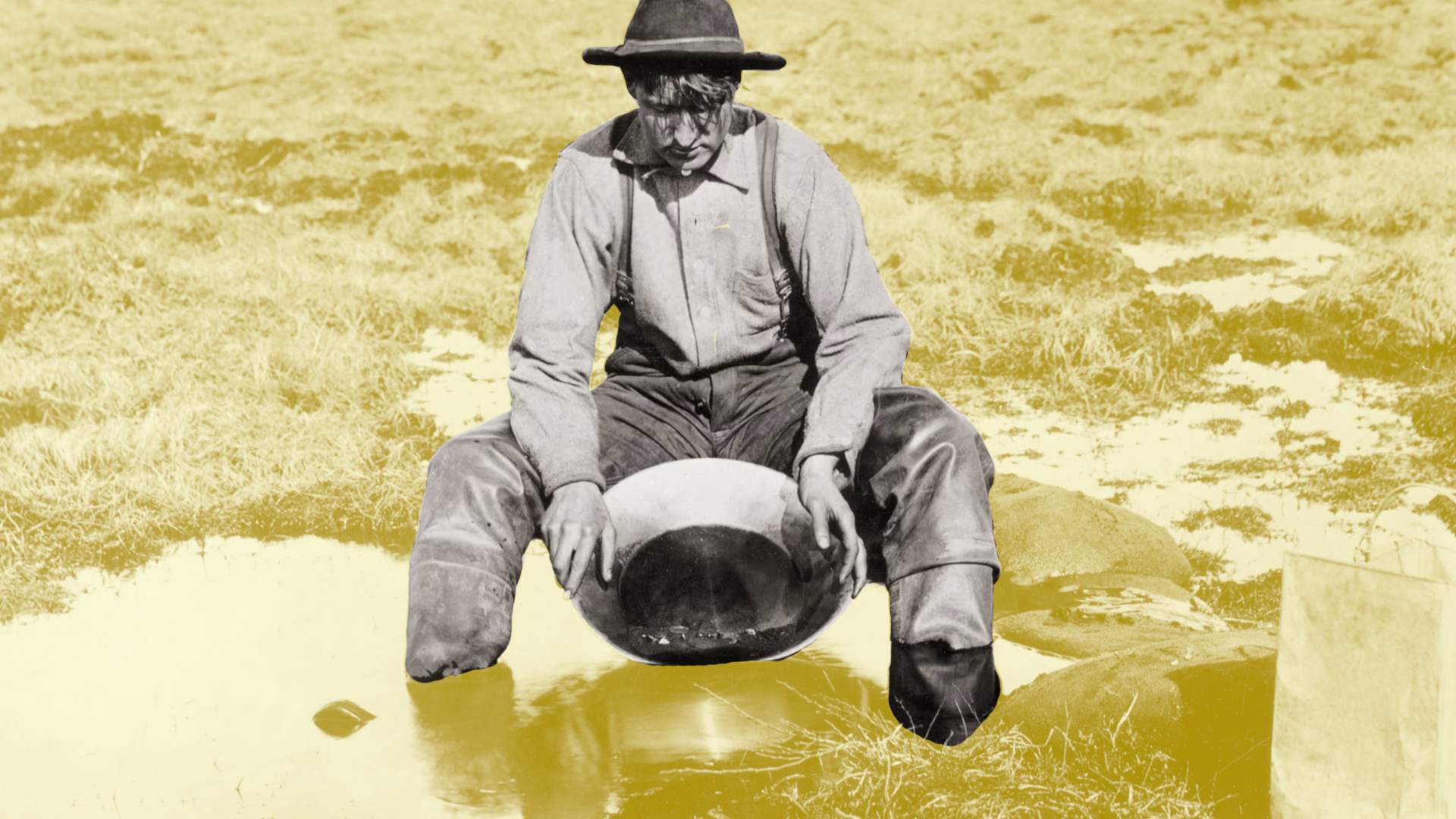Gold Discovered in the Yukon

The Klondike Gold Rush promised riches but delivered hardship, reshaping the Yukon and leaving a legacy written in both fortune and ruin.
What Happened?
George Carmack, along with his Tagish First Nation companions Skookum Jim and Tagish Charlie, was fishing near Rabbit Creek on August 16, 1896, when they spotted gold sparkling in the gravel. Who saw it first is debated—but what mattered was what followed. By the next day, their claim was staked, and Rabbit Creek was renamed with more fitting grandeur: Bonanza Creek.
The news took a year to break beyond the Yukon. But in July 1897, when steamships docked in Seattle and San Francisco carrying more than two tons of Yukon gold, 'Klondike Fever' swept the continent. As many as 100,000 hopeful prospectors began the trek north, though fewer than half survived the grueling journey to Dawson City.
The dream was simple: strike it rich. The reality was brutal. Stampeders had to haul a literal ton of supplies through the wilderness. Some collapsed in exhaustion on the White Pass Trail, littered with the carcasses of 3,000 dead pack animals. Others clawed their way up the Chilkoot Trail’s 'golden staircase,' 1,500 steps carved in ice. Many never made it past the Yukon River’s rapids.
Those who arrived often found disappointment. Most of the best claims had already been staked. Some, like young writer Jack London, mined experience rather than gold—transforming hardship into stories that would outlive the rush. Others turned to supplying miners, making fortunes not from the earth but from the desperation of those who came seeking it.
The Klondike Gold Rush was a paradox. It invigorated the economies of Seattle, San Francisco, and Vancouver, and pumped millions into the Pacific Northwest. Yet it devastated the environment and Indigenous communities, eroding hunting grounds, spreading disease, and leaving scars still visible today.
By 1899, the frenzy fizzled as gold strikes in Nome, Alaska, lured the restless onward. The Yukon had yielded some $250 million in gold, and George Carmack left with $1 million of it. But for most stampeders, the gold rush was not a story of triumph—it was a story of endurance, grit, and loss in the unforgiving North.
Why It Matters
The Klondike Gold Rush captured the imagination of an era—part fever dream, part cautionary tale. It reshaped economies and landscapes, accelerated colonial impacts on Indigenous peoples, and left behind a mythology of fortune and failure. The Yukon reminds us how quickly the promise of riches can pull humanity to the edges of survival.
?
How did the Yukon Gold Rush affect Indigenous communities in the region?
What role did harsh trails like the Chilkoot and White Pass play in shaping the rush’s outcome?
Why did so many stampeders fail to find gold despite risking everything to reach the Yukon?
How did the Klondike Gold Rush influence American and Canadian economies at the turn of the century?
What cultural legacy did writers like Jack London create from their Yukon experiences?
Dig Deeper
In 1897, the US was at the tail end of an economic recession now known as the Panic of 1893. When news spread of gold in the Klondike, thousands uprooted their lives and headed north, chasing a glittering dream through treacherous terrain.
In 1896, Thomas Edison brought cameras to the Yukon, capturing rare images of stampeders and the frenzy of the last great gold rush.
Related

The Great Depression: America in Crisis
The Great Depression was more than a stock market crash — it was a decade-long test of American resilience that reshaped the nation's economy, politics, and daily life.

The New Deal: Fighting Depression with Bold Ideas
Faced with economic collapse, President Franklin D. Roosevelt launched a revolutionary plan to rebuild America from the ground up. The New Deal wasn’t just policy—it was a bold experiment in hope, action, and government responsibility.

The American Revolution: Liberty, Loyalty, and North Carolina’s Role
The fight for independence wasn’t just fought in Boston and Philadelphia—it reached the farms, rivers, and hearts of North Carolina. Learn how the war unfolded, who fought, and why freedom remained a promise still waiting to be fulfilled for many.
Further Reading
Stay curious!
